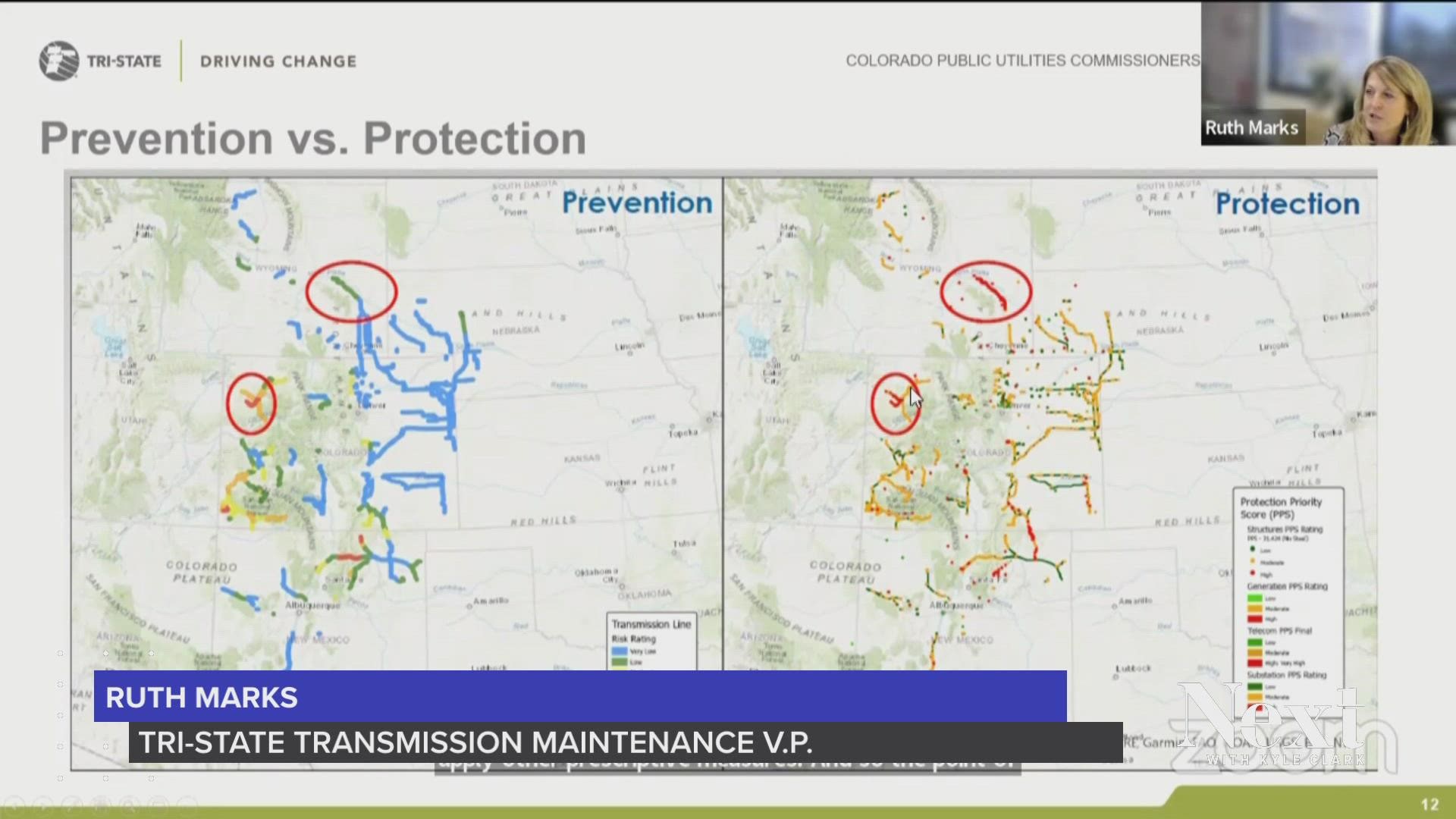DENVER — Colorado utility companies were called to the principal's office on Friday.
The Public Utilities Commission (PUC), which regulates utility companies, asked Xcel Energy and Tri-State to present how the two utilities are preventing wildfires.
The presentations came at a relevant time.
"I am coming to you under a Red Flag Warning as of now, we are so dry on the western slope," said PUC Commissioner John Gavan.
A Red Flag Warning, when temperatures are hot, humidity is low and winds are strong, is projected for the eastern plains and the metro area on Saturday.
A Red Flag Warning cautions against burning and activities that cause a spark.
The presentations to the PUC explained how utility companies try to limit their equipment from causing a fire.
Tri-State, for example, uses drones, 360-degree cameras set high above forested areas and satellite imagery to help find areas that need mitigation.
"We have had mitigation practices in place for years and years, we just never called them fire mitigation, it was more in the past about reliability," said Tri-State Transmission Maintenance Vice President Ruth Marks.
Tri-State really has transmission lines in four states: Colorado, New Mexico, Wyoming and Nebraska.
"The western slope, as Commissioner Gavan mentioned, is a very high fire risk area for Tri-State," said Marks. "There is a section of our line around Craig/Meeker, which is red, and red is, of course, a very high fire risk."
The satellite imagery that Tri-State uses helps determine the height of trees and vegetation that are near transmission lines.
All the gadgetry costs.
"The point of all this is it helps us determine where we should spend our dollars and doing what," said Marks. "We have far more need for wildfire mitigation than we do funds."
Xcel Energy currently charges customers an extra 63 cents a month, as a pass through for wildfire mitigation costs.
During the PUC presentation, Xcel explained how their equipment can be set to increased sensitivity so power lines won't continue to reenergize in case of failure.
"What we're trying to do is if there's a tree that had fallen on the line, essentially prevent the system from trying to reenergize thus cause a fire," said Xcel Energy Distribution Operations Vice President Kris Farruggia. "It is worth noting here, that we are prioritizing safety over reliability."
Xcel's presentation also included modelling that showed how a power pole might bend in 90 mile per hour winds. The modeling helps tell Xcel which power poles might need to be replaced.
The PUC hearing was about what is being done by utility companies and what the state might need to ask utility companies to do in the future.
"There doesn't appear to be a finish line in sight here," said PUC Commissioner Megan Gilman. "This is bad and getting worse, just in terms of the environmental conditions that we're all working under."
SUGGESTED VIDEOS: Full Episodes of Next with Kyle Clark

